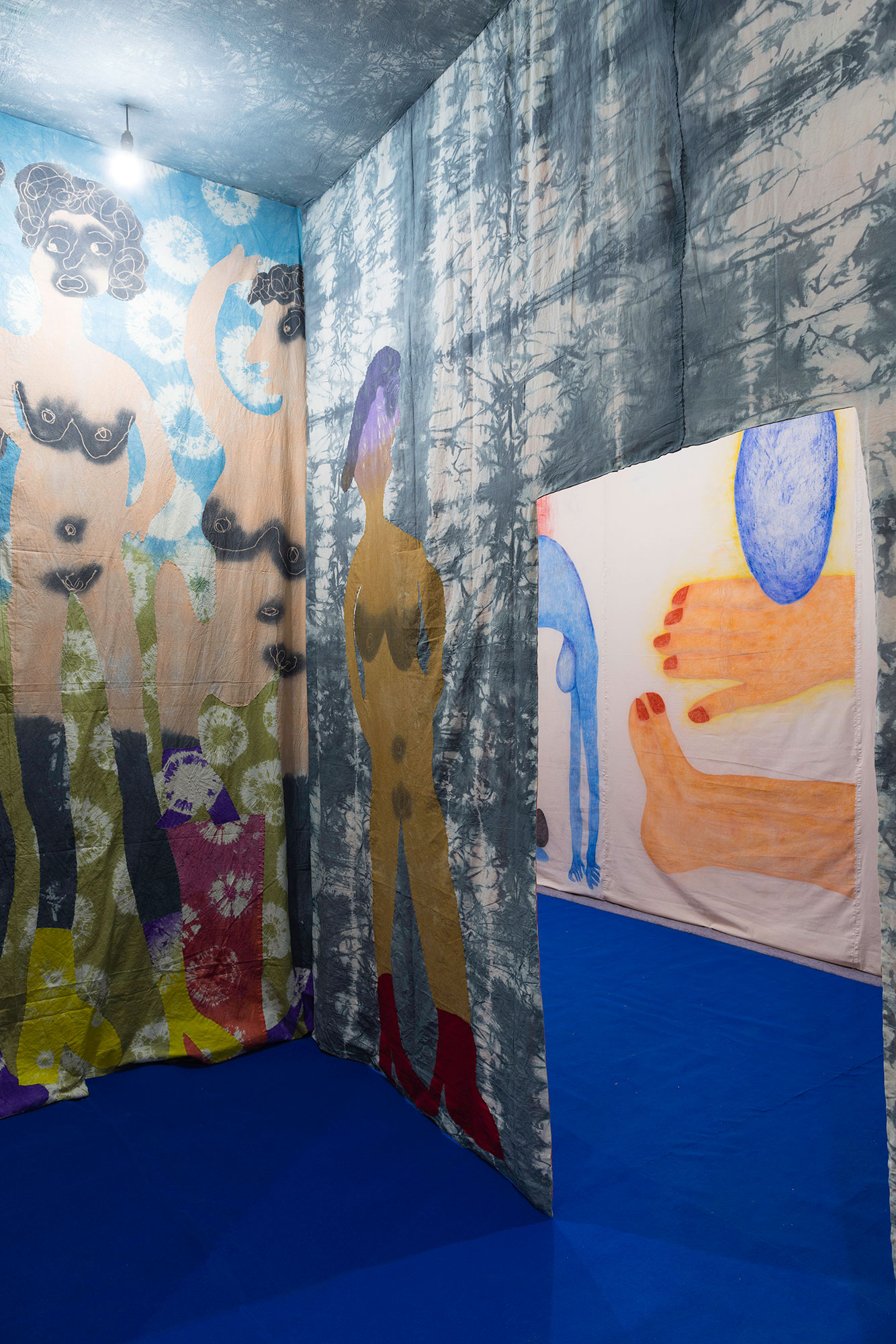La lengua de los distraídos [The Distracted Language]
2021; Installation view, I don’t know you like that: The Bodywork of Hospitality, Bemis Center for Contemporary Arts, 2021; at the exhibition I don’t know you like that: The Bodywork of HospitalityDecember 9, 2021–March 20, 2022. Curated by Sylvie Fortin, Bemis Center 2019–21 Curator-in-Residence
Photo: Colin Conces.
Celina Eceiza’s practice daringly centers drawing in installations that take visitors on journeys of embodied pleasure and narrative wonder. Developed over many months for I don’t know you like that: The Bodywork of Hospitality, Celina Eceiza’s site-sensitive installation immerses visitors in a world where the body is host to a constellation of powers, practices, and beliefs.
Introduced by a slightly oversized soft sculpture of a body in parts leaning in a corner, colorful monumental figures partaking in fluid life-affirming rituals grace a long blue-floored passageway, buoying visitors into a transformative voyage. These large chalk drawings lead to a smaller room where contortionists and muses both neutralize time and open onto a wide space of rebirth where visitors can rest on a few more soft body-parts sculptures as they contemplate a portrait gallery of expanded kinship. Eceiza’s installation also references temporary architectures—improvised shelter, space of childhood imagination and play, and ephemeral site of communal ritual practice—reassigning the positions of host and guest to create a space for an array of possible hospitable/hostile relationships.
Sylvie Fortin.
Photo: Colin Conces.
Celina Eceiza’s practice daringly centers drawing in installations that take visitors on journeys of embodied pleasure and narrative wonder. Developed over many months for I don’t know you like that: The Bodywork of Hospitality, Celina Eceiza’s site-sensitive installation immerses visitors in a world where the body is host to a constellation of powers, practices, and beliefs.
Introduced by a slightly oversized soft sculpture of a body in parts leaning in a corner, colorful monumental figures partaking in fluid life-affirming rituals grace a long blue-floored passageway, buoying visitors into a transformative voyage. These large chalk drawings lead to a smaller room where contortionists and muses both neutralize time and open onto a wide space of rebirth where visitors can rest on a few more soft body-parts sculptures as they contemplate a portrait gallery of expanded kinship. Eceiza’s installation also references temporary architectures—improvised shelter, space of childhood imagination and play, and ephemeral site of communal ritual practice—reassigning the positions of host and guest to create a space for an array of possible hospitable/hostile relationships.
Sylvie Fortin.




















